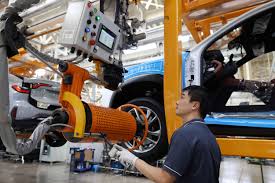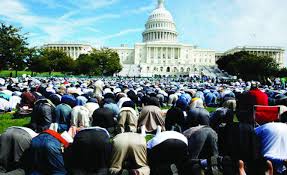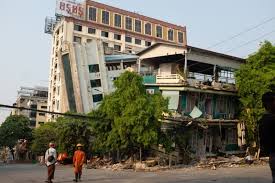China’s manufacturing hits 12-month high, driven by strong orders

China’s manufacturing activity expanded at the fastest pace in a year in March, a factory survey showed on Monday, with new orders boosting production, giving the world’s No.2 economy some reprieve as it deals with an intensifying U.S. trade war.
The reading should reassure officials that further fiscal support launched this year is bolstering the $18 trillion economy, which is also benefiting from foreign buyers frontloading purchases in anticipation of further U.S. trade curbs.
The Reuters Tariff Watch newsletter is your daily guide to the latest global trade and tariff news.
U.S. President Donald Trump is set to announce new “reciprocal” tariffs on Wednesday to tackle perceived trade imbalances, potentially adding more levies on Chinese goods.
Trump has already imposed a cumulative 20% tariff on all Chinese imports since returning to the White House in January, accusing Beijing of not doing enough to curb the flow of chemicals used to make the deadly drug fentanyl into the U.S.
The official purchasing managers’ index (PMI) rose to 50.5 in March from 50.2 a month prior, the highest reading since March 2024 and matching analysts’ forecasts in a Reuters poll.
Advertisement · Scroll to continue
The non-manufacturing PMI, which includes services and construction, accelerated to 50.8 from 50.4.
“The official PMIs suggest that infrastructure spending is ramping up again and that exports have so far remained resilient in the face of U.S. tariffs,” said Julian Evans-Pritchard, head of China economics at Capital Economics.
“But the surveys are still consistent with slower GDP growth in Q1 amid weakness in the service sector,” he added.
China has kept its economic target for this year unchanged at “around 5%” despite Trump’s tariff threats, which could call time on a largely export-led recovery underway since the end of the COVID-19 pandemic in late 2022.
the S&P 500 shedding nearly 2%, and the Nasdaq nosediving 2.7%.
The government has pledged more fiscal stimulus, increased debt issuance, further monetary easing and put even greater emphasis on boosting domestic demand to cushion the impact of the trade war.
China’s economy has had a bumpy start this year, with nascent improvement in retail sales offset by persistent deflationary pressures and rising unemployment.
Trying to assuage concerns among foreign enterprises over China’s economy amid Trump’s tariff threats, Chinese President Xi Jinping gathered a group of multinational CEOs last week and urged them to protect global industry and supply chains.
At a key business forum earlier this month in Beijing, Chinese Premier Li Qiang urged countries to open their markets to combat “rising instability and uncertainty.”
Beijing is also doubling down on its “cash for clunkers” consumer goods trade-in programme to encourage households to open up their wallets.





